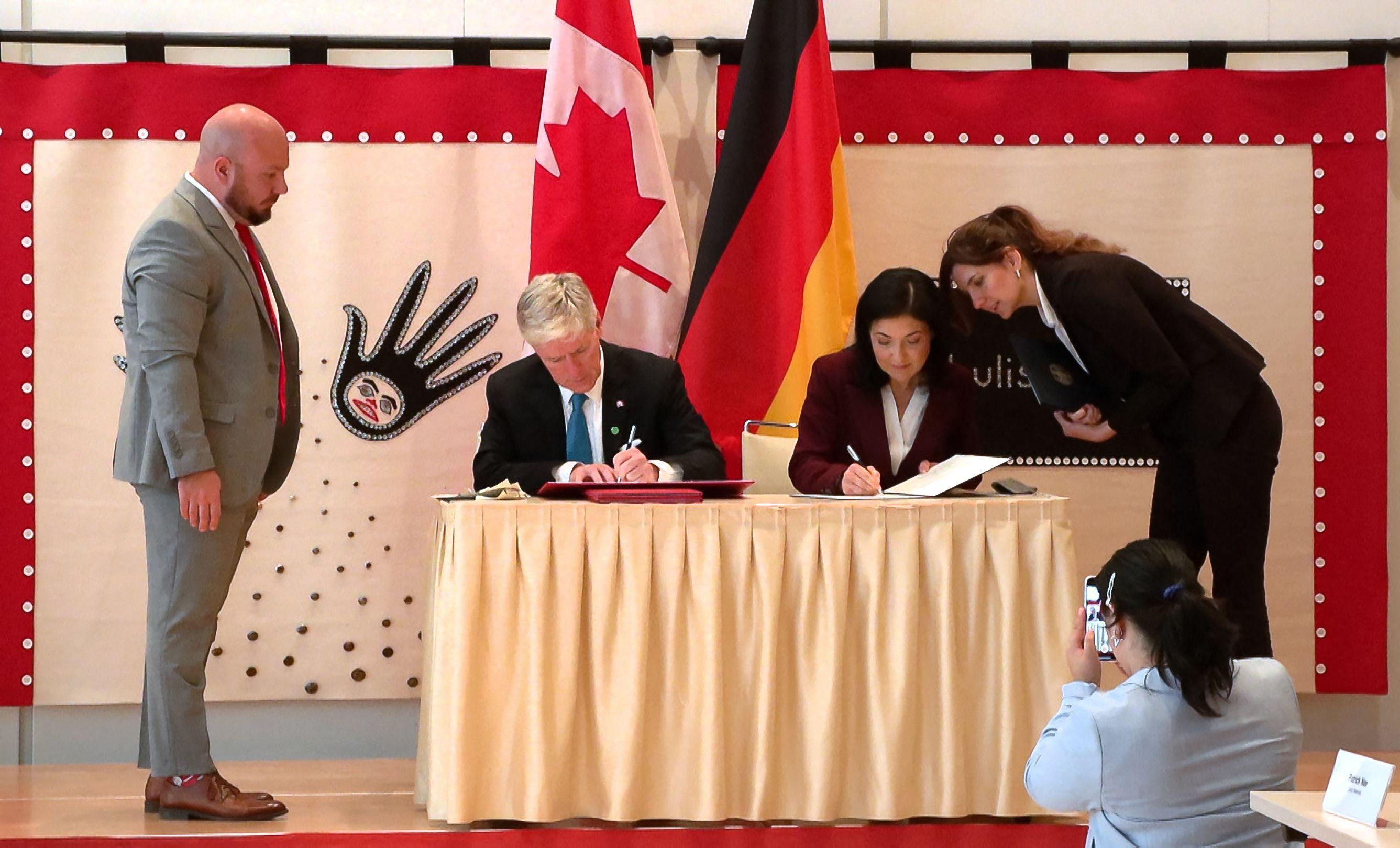
A video grab taken from AFP footage shows Canada's Minister of Energy and Natural Resources Timothy Hodgson (L) and German Economy and Energy Minister Katherina Reiche as they sign a Joint Declaration of Intent (JDoI) on critical minerals, on August 26, 2025 at Canada's Embassy to Berlin. (Photo by Larissa RAUSCH / AFP)
Germany and Canada have signed an agreement to boost cooperation in critical raw materials including rare earths as Berlin tries to reduce its dependence on Chinese imports.
China's dominance in supplying the world with such materials has been in the spotlight since Beijing this year introduced export curbs on some key rare earths, triggering jitters among businesses globally.
Rare earths, which are abundant but often extremely difficult to extract, are used in products from electric car batteries to wind turbines and computer hard drives.
Germany is hoping to cultivate Canada as an alternative source of rare earths as well as other materials such as lithium, graphite, cobalt and nickel.
German Economy Minister Katherina Reiche hailed the agreement, saying that "reliable supply chains are of central importance to businesses in both countries."
Three German companies, including copper producer Aurubis, also announced memorandums of understanding with Canadian firms involved mining and processing raw materials.
On Aug. 26 Reiche signed the deal with her Canadian counterpart Tim Hodgson, who said he hoped it would ensure "that German manufacturers can count on Canadian suppliers and that Canadian producers can access global markets."
China's export restrictions have rattled industry in Germany more than in many other countries.
In late July, the European Union said it had reached an agreement with China on a mechanism to reduce curbs on rare earths exports to the bloc.
Other materials currently sourced from China are also key to German businesses. Lithium, for example, is crucial for Germany's flagship automobile sector as it increasingly shifts towards electric vehicles.